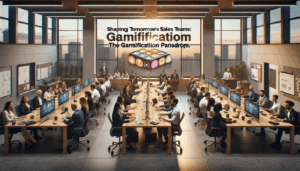In the fast-paced sales industry, team performance has become the ultimate metric of success. With markets growing increasingly competitive, sales leaders must go beyond traditional methods and embrace innovation to unlock their teams’ full potential.
This guide explores how emerging technologies like gamification and AI, combined with effective recognition strategies, can transform team dynamics and drive exceptional results in 2025.
Let’s dive into the actionable steps you can take to improve sales performance by setting measurable goals, tracking key performance indicators (KPIs), and continuously refining sales processes to adapt to the changing landscape and meet customer needs.
What is Sales Performance, and Why Does It Matter?
Team performance is the ability of a group to achieve its objectives efficiently and effectively. For sales teams, it means exceeding revenue targets, delivering value to customers, and maintaining high morale. Tracking key performance indicators (KPIs) is crucial in measuring sales team performance against goals, helping to optimize both individual and group performance.
Sales leaders who prioritize team performance see benefits such as:
- Increased Productivity: Teams that perform well accomplish more in less time.
- Improved Employee Retention: Engaged and satisfied employees stay longer, reducing turnover.
- Higher Customer Satisfaction: A motivated team delivers better customer experiences.
Key Challenges Impacting Team Performance in 2025
Despite its importance, achieving high team performance is no small feat. Sales leaders face challenges like:
- Remote Work Fatigue: Keeping remote teams engaged and motivated.
- Rapid Technological Changes: Adapting to new tools and platforms.
- Rising Competition: Standing out in a saturated market.
- Burnout: Preventing overwork and maintaining work-life balance.
A sales manager plays a crucial role in addressing these challenges by overseeing sales performance measurement and managing risks.
Recognizing these challenges is the first step toward addressing them effectively.
Building a High-Performing Sales Team
Building a high-performing sales team is crucial for achieving sales success. A well-structured team with the right skills, training, and motivation can make all the difference in meeting sales targets and driving revenue growth.
Hiring the Right People
Hiring the right people is the foundation of building a high-performing sales team. Sales managers should look for candidates with the right combination of skills, experience, and personality traits. This includes strong communication and interpersonal skills, a proven track record of sales success, and a passion for the industry or product.
When hiring sales reps, it’s essential to consider the following factors:
- Sales Experience: Look for candidates with a proven track record of sales success in a similar industry or product.
- Skills: Consider the skills required for the role, such as communication, negotiation, and problem-solving.
- Personality: Assess the candidate’s personality traits, such as motivation, resilience, and adaptability.
- Cultural Fit: Ensure the candidate aligns with the company culture and values.
By hiring the right people, sales managers can set their team up for success and drive sales performance.
The Role of Gamification in Sales Success
What is Gamification?
Gamification applies game-like elements to non-game environments to motivate and engage people. In sales, this can include leaderboards, badges, and rewards for achieving milestones.
How Gamification Boosts Team Performance
Gamification enhances team performance by:
- Creating Friendly Competition: Encouraging individuals to push their limits.
- Visualizing Progress: Helping teams see their achievements in real time.
- Promoting Collaboration: Fostering teamwork toward shared goals.
Additionally, gamification can significantly enhance sales productivity by providing clear metrics and motivating teams to achieve higher performance levels.
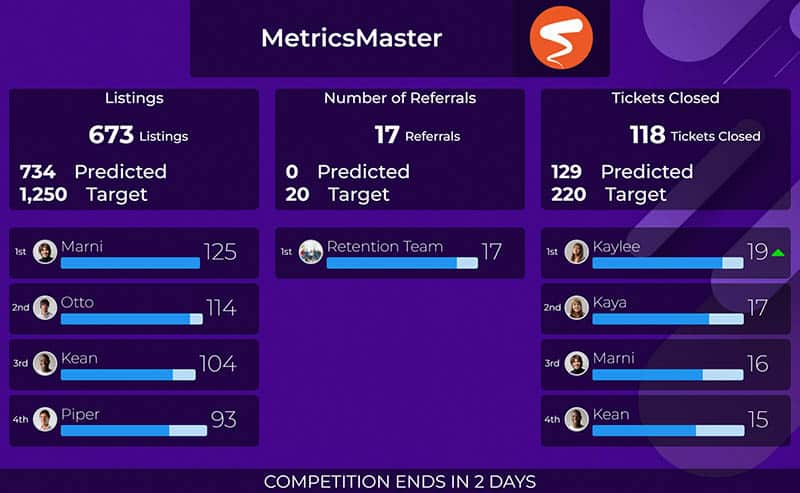
Companies that adopt gamification see tangible results. According to Gallup, engaged employees are 21% more productive than their disengaged counterparts.
Harnessing the Power of AI for a Smarter Sales Strategy
What Can AI Do for Sales Teams?
AI is revolutionizing sales by automating mundane tasks, analyzing data, and providing actionable insights. The importance of sales data lies in its ability to provide actionable insights that help sales managers strategize and improve team performance. It allows sales reps to focus on what matters most: building relationships and closing deals.
Practical Applications of AI in Sales
AI can:
- Enhance Lead Scoring: Identify high-potential prospects.
- Personalize Customer Engagement: Tailor communication to individual preferences.
- Improve Forecasting: Predict trends and set realistic targets.
The Future of AI in Sales
By 2026, 75% of B2B organizations will have replaced traditional sales techniques with AI-driven strategies, according to Gartner.
The Undeniable Importance of Employee Recognition
Employees who feel valued are more engaged, motivated, and loyal. Recognition is a powerful driver of team performance because it satisfies the human need for appreciation.

Types of Recognition That Work
- Peer-to-Peer Recognition: Encouraging teammates to celebrate each other’s achievements.
- Manager-to-Employee Recognition: Personalized acknowledgments from leaders.
- Public Recognition: Celebrating wins during team meetings or on leaderboards.
The Impact on Performance
Recognition has been shown to boost employee engagement by 60%, as noted by Harvard Business Review. This increased engagement can lead to better service for existing customers, who then become advocates for the brand.
Building a Culture of Continuous Learning
Why Learning is Critical in 2025
The sales landscape is constantly changing, and staying ahead requires ongoing skill development. Teams that embrace continuous learning are better equipped to adapt to new challenges. Continuous learning can significantly improve your sales performance by enabling teams to set and achieve higher sales goals over time.
How to Implement Continuous Learning
- Microlearning Modules: Bite-sized lessons that fit into busy schedules.
- AI-Powered Training: Personalized learning paths tailored to individual needs.
- Mentorship Programs: Leveraging experienced team members to guide others.
Benefits of Continuous Learning
- Higher Adaptability: Teams can quickly adjust to market changes.
- Increased Confidence: Knowledgeable reps perform better.
- Improved Team Morale: A culture of growth fosters positivity.
Technology: The Backbone of Modern Sales Teams
Essential Tools for Team Success
- Customer Relationship Management (CRM) Systems: Streamlining sales pipelines.
- Collaboration Tools: Keeping remote and hybrid teams connected.
- Gamification Platforms: Engaging and motivating employees.
Integrating Technology Seamlessly
Adopting new tools can be challenging. Ensure a smooth transition by adapting sales processes to integrate these new tools effectively.
- Providing Training: Help teams understand and embrace new tools.
- Encouraging Feedback: Involve employees in decision-making.
- Measuring Impact: Track performance metrics to assess effectiveness.
Optimizing the Sales Process
Optimizing the sales process is critical for improving sales performance. A well-defined sales process can help sales reps navigate complex sales cycles, build strong relationships with customers, and close deals more efficiently.
Streamlining the Sales Process
Streamlining the sales process involves identifying and eliminating unnecessary steps, automating manual tasks, and leveraging technology to enhance the sales experience. This can include:
- Implementing a Sales Enablement Platform: Provide reps with the right content and tools to succeed.
- Automating Data Entry: Free up reps’ time by automating administrative tasks.
- Using CRM Software: Track customer interactions and sales pipeline activity to ensure nothing falls through the cracks.
- Establishing Clear Sales Stages: Define exit criteria to ensure reps are moving deals forward efficiently.
By streamlining the sales process, sales managers can reduce sales cycle times, increase conversion rates, and improve overall sales performance.
Sales Enablement and Content
Sales enablement and content are critical components of a successful sales strategy. Providing reps with the right content and tools can help them build strong relationships with customers, address common objections, and close deals more efficiently.
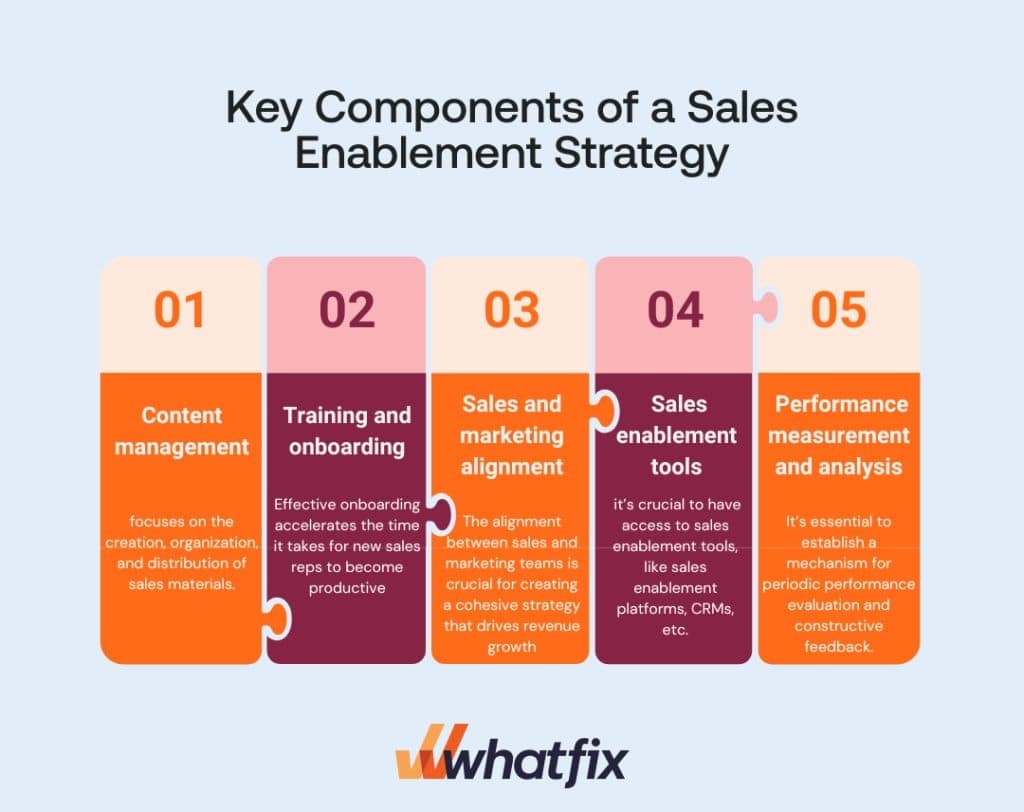
Providing the Right Content and Tools
Providing the right content and tools involves creating and curating relevant, timely, and engaging content that addresses the needs and pain points of customers. This can include:
- Developing Sales Playbooks and Battle Cards: Equip reps with a clear understanding of the sales process and common objections.
- Creating Case Studies and Whitepapers: Establish the company as a trusted authority in the industry.
- Providing Access to Sales Analytics: Help reps make informed decisions and optimize their sales strategy.
- Offering Training and Coaching: Develop the skills and knowledge reps need to succeed.
By providing the right content and tools, sales managers can empower their reps to succeed and drive sales performance.
Driving Motivation Through Goal Setting
The Science Behind Goals
Goals provide direction and motivation. Teams with clear, achievable goals are more focused and driven.
Setting SMART Goals
Specific, Measurable, Achievable, Relevant, and Time-bound (SMART) goals ensure clarity and alignment.
Measuring Team Performance: Metrics That Matter
To optimize team performance, sales leaders need a clear understanding of how their team operates. Metrics provide an objective view of what’s working and what isn’t. Here’s a fresh take on the essential metrics every sales leader should prioritize.
Why Tracking Performance Metrics is Crucial
Tracking performance metrics is about more than numbers—it’s about clarity and control. Here’s what you gain:
- Actionable Insights: Pinpoint areas for improvement.
- Motivated Teams: Foster healthy competition and goal alignment.
- Informed Decisions: Use data to shape strategies and allocate resources effectively.
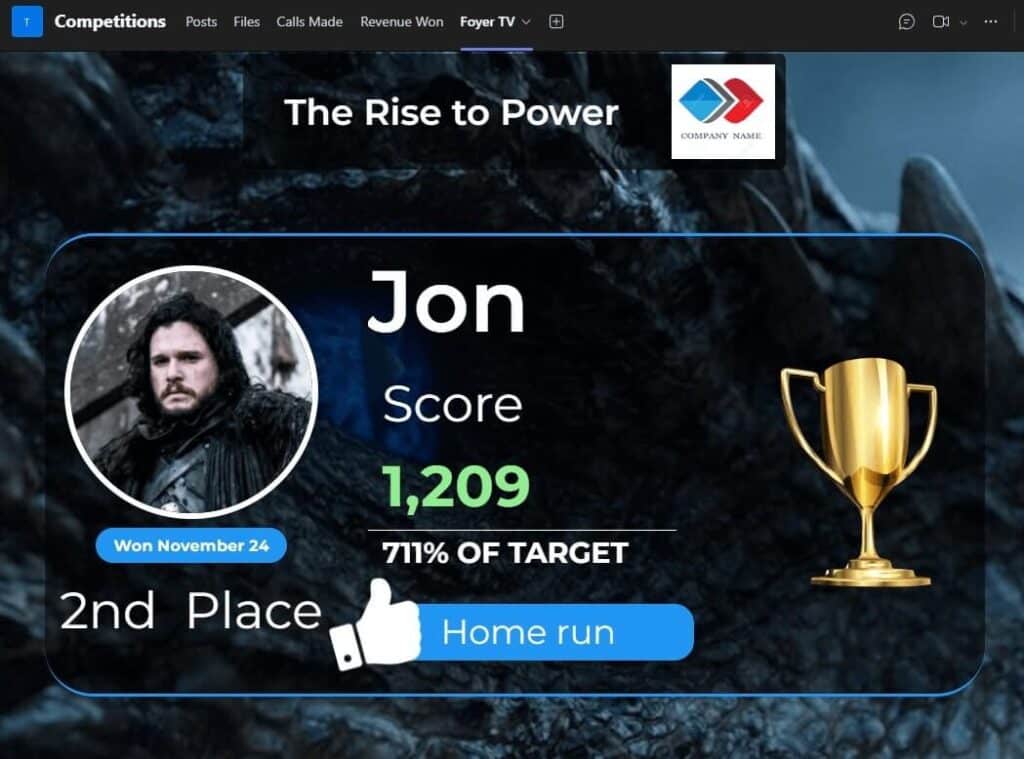
Metrics Breakdown: What to Focus On
In the ever-evolving sales landscape, understanding the right metrics is crucial for improving sales performance. While traditional metrics like revenue and conversion rates remain important, modern sales strategies require a deeper dive into data to fully capture a sales team’s performance.
By focusing on activity, productivity, pipeline, and outcome metrics, sales leaders can gain a comprehensive view of their team’s efforts and results. This holistic approach not only highlights areas for improvement but also celebrates successes, fostering a culture of continuous enhancement within the sales organization.
Prioritizing the right metrics ensures that sales processes align with strategic goals, ultimately driving better sales outcomes and enhancing customer satisfaction.
1. Activity Metrics
Activity metrics track what your team is doing daily and whether their actions align with their goals.
- Key Examples:
- Number of calls made.
- Emails sent.
- Meetings booked.
- Why It Matters: High activity levels often correlate with high success rates.
2. Productivity Metrics
Productivity metrics assess how efficiently your team turns effort into results.
- Key Examples:
- Deals closed per representative.
- Revenue per salesperson.
- Why It Matters: This data highlights top performers and identifies who may need support.
3. Pipeline Metrics
Pipeline metrics reveal how deals flow through your sales funnel and where blockages might occur.
- Key Examples:
- Deals in each stage of the pipeline.
- Average deal value.
- Sales cycle length.
- Why It Matters: They help you refine your process for faster conversions.
4. Outcome Metrics
Outcome metrics measure the final impact of your team’s efforts on business success.
- Key Examples:
- Monthly revenue growth.
- Customer retention rates.
- Quota attainment percentages.
- Why It Matters: These metrics are your scorecard for overall success.
Common Pitfalls to Avoid
- Focusing on Vanity Metrics
Metrics like the number of meetings without context can be misleading. Always tie metrics to outcomes. - Ignoring Context
Metrics need context to be meaningful. For example, if deal volume increases but revenue stays flat, it could signal a focus on smaller deals. - Overloading Your Dashboard
Too many metrics can overwhelm your team. Prioritize those with the biggest impact on your goals.
Tools to Simplify Metric Tracking
- CRM Platforms: Use tools like HubSpot or Salesforce for centralized tracking.
- Gamification Software: Platforms like Spinify visualize performance and motivate teams through leaderboards.
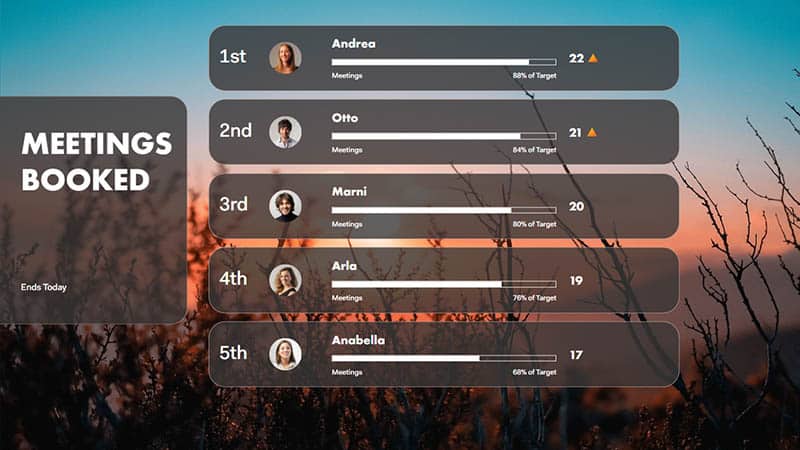
- Analytics Tools: AI-powered solutions provide deeper insights and trend forecasting.
How to Use Metrics to Drive Change
- Regular Reviews: Schedule weekly or monthly check-ins to discuss progress.
- Transparent Sharing: Share metrics openly with your team to build trust and collaboration.
- Recognize Achievements: Celebrate milestones publicly to boost morale.
- Act on Data: Use metrics to refine strategies and address weaknesses proactively.
Metrics are more than numbers—they’re the story of your team’s journey toward success. By focusing on the right data, equipping your team with the best tools, and using insights to fuel progress, you can maximize team performance and lead your sales organization to unparalleled results.
The Role of Leadership in Team Performance
Leading by Example
Sales leaders set the tone for their teams. Demonstrating enthusiasm, adaptability, and a commitment to excellence inspires others to follow suit.
Empowering Teams
Give your team the tools, autonomy, and support they need to excel. Trust fosters innovation and accountability.
Providing tools and support to each sales rep is crucial for achieving consistent sales performance and meeting sales goals.
Boosting Sales Performance Through Gamification: A Game-Changing Strategy
Gamification isn’t just a trend—it’s a transformative strategy that has revolutionized how sales teams achieve their goals. By integrating game-like elements into the sales process, organizations can unlock higher levels of engagement, motivation, and performance.
Gamification also plays a pivotal role in aligning sales activities with company objectives. By setting up challenges that mirror corporate goals, sales managers can ensure that their teams’ efforts are in sync with broader business strategies.
This alignment not only boosts sales performance but also reinforces the importance of each sales rep’s contribution to the company’s success. As a result, sales teams feel more connected to the organization’s mission, leading to increased job satisfaction and loyalty.
Furthermore, gamification can serve as a powerful tool for onboarding and training new sales reps. By incorporating game-like scenarios and simulations, new team members can quickly learn the sales process, understand key performance indicators, and get up to speed with the company’s sales strategies. This engaging approach reduces the learning curve and empowers new hires to start contributing to sales targets sooner, enhancing overall sales productivity.
Lastly, gamification can significantly impact customer experience by encouraging sales reps to focus on customer satisfaction and retention. By rewarding reps for achieving high customer satisfaction scores or maintaining long-term client relationships, sales teams are motivated to prioritize the customer experience.
This focus on customer-centric sales processes not only boosts sales performance but also strengthens the brand’s reputation, leading to increased customer loyalty and a higher average customer lifetime value.
How Gamification Elevates Sales Performance
- Encourages Friendly Competition
Sales professionals thrive on competition. Gamification leverages this by introducing leaderboards, challenges, and rewards. Team members are driven to outperform their peers in a healthy, engaging way. - Provides Real-Time Feedback
With gamification, progress is tracked and displayed in real-time. This immediate feedback helps sales reps stay on top of their performance, enabling quick adjustments to meet their goals. - Increases Motivation with Rewards
Whether it’s badges, points, or tangible rewards, gamification taps into the human desire for recognition. Celebrating even small wins keeps team members motivated to push forward. - Fosters Team Collaboration
Beyond individual goals, gamification can encourage group achievements. Collaborative challenges and team-based competitions strengthen bonds and improve overall morale. - Improves Goal Clarity
Gamification breaks down big objectives into smaller, actionable goals. Reps can focus on incremental achievements, which are easier to understand and more rewarding to accomplish.
Real-Life Results of Gamification in Sales
- Higher Engagement: Companies using gamification see a 60% increase in employee engagement, as reported by Gallup.
- Improved Productivity: Sales teams using gamified platforms consistently outperform their counterparts in productivity and results.
- Retention of Top Talent: Employees who feel motivated and recognized are more likely to stay, reducing costly turnover.
Practical Ways to Gamify Sales
- Leaderboards:
Display individual and team rankings to encourage friendly competition. - Milestone Celebrations:
Highlight achievements such as reaching quotas or securing high-value deals. - Custom Challenges:
Create tailored contests around specific goals, like closing deals in a particular sector or upselling existing clients. - Incentive Programs:
Offer meaningful rewards, such as gift cards, extra PTO, or exclusive experiences, to keep reps motivated.
Why Gamification is Essential in 2025
With sales teams navigating hybrid work environments and increasingly competitive markets, gamification offers a scalable way to maintain motivation and performance. It’s not just about playing games—it’s about making work more engaging, rewarding, and results-oriented.
Elevate Your Sales Team with Spinify
At Spinify, we’ve mastered the art of gamification. Our platform empowers sales leaders to create personalized leaderboards, set dynamic challenges, and provide real-time feedback to drive performance. Ready to take your sales team to the next level? Learn more about Spinify.
Transform your sales performance with gamification.

Leading Sales Teams to Success in 2025
In the ever-evolving landscape of sales, leading sales teams to success in 2025 demands a multifaceted approach that combines innovation, strategic planning, and a keen understanding of emerging trends. Sales leaders must embrace cutting-edge technologies and methodologies to stay ahead of the curve and empower their teams to achieve peak performance.
Embracing Technological Advancements
In 2025, technology will play a pivotal role in shaping the success of sales teams. By integrating artificial intelligence (AI) and machine learning into the sales process, leaders can provide their teams with valuable insights and predictive analytics. AI-driven tools can automate repetitive tasks, allowing sales reps to focus on building relationships and closing deals. Additionally, virtual reality (VR) and augmented reality (AR) can enhance customer interactions by providing immersive experiences that showcase products and solutions in a compelling way.
Cultivating a Customer-Centric Approach
A successful sales team in 2025 will prioritize customer experience and satisfaction above all else. By understanding the evolving needs and preferences of their target audience, sales professionals can tailor their approaches to deliver personalized solutions. This customer-centric mindset fosters long-term relationships and increases customer retention, ultimately driving sales performance and revenue growth.
Fostering a Culture of Continuous Learning
Continuous learning and development will be essential for sales teams to thrive in 2025. Sales leaders should invest in training programs that equip their teams with the latest skills and knowledge needed to navigate the complexities of the modern sales landscape. By encouraging a culture of curiosity and adaptability, organizations can ensure that their sales reps remain agile and capable of responding to new challenges and opportunities.
Prioritizing Diversity and Inclusion
Diversity and inclusion will be critical factors in building high-performing sales teams in 2025. By fostering an inclusive environment that values diverse perspectives and experiences, sales leaders can drive innovation and creativity within their teams. Diverse teams are better equipped to understand and connect with a wide range of customers, leading to improved sales outcomes and market expansion.
Leveraging Data-Driven Decision Making
Data-driven decision-making will be a cornerstone of successful sales strategies in 2025. By harnessing the power of data analytics, sales leaders can gain valuable insights into customer behavior, market trends, and team performance. This information enables more informed decisions, allowing sales teams to optimize their strategies and achieve better results.
Enhancing Collaboration and Communication
Effective collaboration and communication will be vital for sales teams to succeed in 2025. With the rise of remote and hybrid work environments, sales leaders must implement tools and platforms that facilitate seamless communication and collaboration among team members. By fostering a sense of unity and shared purpose, sales teams can work together more efficiently to achieve their goals.
In conclusion, leading sales teams to success in 2025 requires a forward-thinking approach that embraces innovation, prioritizes customer satisfaction, and fosters a culture of continuous learning and inclusivity. By leveraging technology, data, and collaboration, sales leaders can empower their teams to excel in an increasingly competitive market.
Maximizing team performance in 2025 requires embracing innovation, recognizing achievements, and fostering continuous learning. By integrating gamification, leveraging AI, and prioritizing recognition, sales leaders can inspire their teams to achieve extraordinary results. Additionally, it is crucial to measure sales performance through specific metrics such as sales revenue, conversion rates, and customer retention to gain insights and drive success.
The future of sales belongs to those who invest in their teams today. Will you take the leap?


